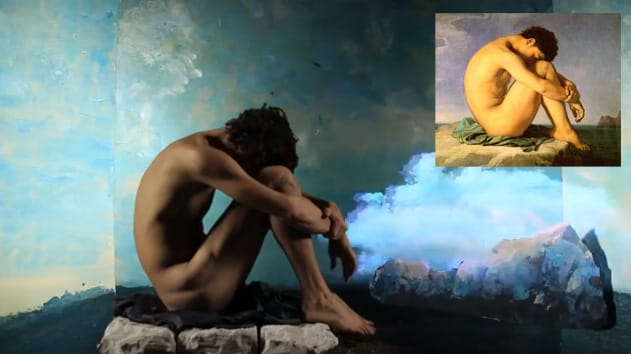Art Museum Promo Video That Gets It (Mostly) Right
European museums have been slower than North American institutions to adopt a digital forward way of doing things, but the Musée d'Orsay's recent video promotion for their latest show, Masculine / Masculine, is on the cutting edge of the digital wave.

European museums have been slower than North American institutions to adopt a digital-forward way of doing things, but the Musée d’Orsay’s recent video promotion for their latest show, Masculine / Masculine. The Nude Man in Art from 1800 to the Present Day, is on the cutting edge of the online wave.
While most museum promotional videos fixate on showing us the objects in a particular show — and in the process show us too many things in frames or in darkened rooms with a calming narrative voice, often with a British accent if it’s in English — this video offers an interpretation that sparks your interest in the inspirations behind the various tableaus. As an added bonus, the video has no narration, thus appealing to a more global audience, and the museum allows the scenes that morph from one to another to speak for themselves. It was created by Tito Gonzalez Garcia, a Paris-based French-Chilean director with an intriguing Vimeo channel. As the artistic director for the video, Lorenzo Papace, explained on his blog (which also includes lots of great behind-the-scenes photos), “C’est un voyage dans l’art et dans le temps.” It’s a journey in art and time.
It certainly helps that the show’s theme, masculinity, is a sexy topic, but there are countless other shows that could benefit from selling their art historical shows with a twist. The Metropolitan Museum’s latest show Balthus: Cats and Girls — Paintings and Provocations is a perfect example of internet-ready catnip.
The Museum of Contemporary Art in Los Angeles (MOCA) has been doing some interesting things with their own YouTube channel, but their videos still largely tread the well-traveled territory of documentary or — when they’re being adventurous — music videos, but the art in the latter often ends up feeling more like decor than anything else.
But all is not great with the d’Orsay video. I do question the judgment of the creators about the artistic version of blackface they employ in the video in order to emulate the figure in a painting by Kehinde Wiley. While done in an unconventional way (ink spilled into a bathtub) it nonetheless taps into a much larger issue, and doesn’t really have a place in an advertisement that aims to appeal to a wide cross-section of the public. Some things may be lost in translation but this isn’t one of them.





